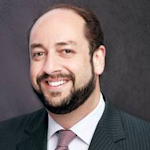Teledentistry: How visual treatment planning goes virtual
A key part of a dental office visit is explaining the recommended treatment plan to patients. Without their complete understanding and buy-in, treatment can be postponed indefinitely.
It’s funny how patients will often find the money to pay for something they want, but they also want to avoid pain and costly treatment down the road. Sometimes what makes the difference is for patients to better understand the current state of their oral health, how you plan to treat it, and how things will progress if left untreated. There are better ways than a chairside explanation to inform them about all of these.
Visual treatment planning is clinical show and tell, which is a simple concept. Patients understand images. Explaining a treatment plan without visual aids is akin to speaking to someone in a foreign language. Yes, people will nod their heads at all the opportune moments, but most often they will not fully understand what you’re saying. Because of this, they’re not likely to understand the importance of the proposed treatment plan.
They’ll think about it. More likely they will forget about it until they feel pain or discomfort, or something appears wonky when they look in the mirror. They may also face challenges when trying to explain it to their family members, who often influence their decision-making.
To avoid these common scenarios, save your breath and show your patients what’s going on in their mouths. This is easily achieved by using an intraoral camera connected to a visual display device such as a tablet, laptop, or overhead monitor. Sharing images with your patients chairside provides these benefits:
• It provides information in a manner that patients are accustomed to and prefer. Treatment planning with images speaks to visual learners and relies less on what you’re telling someone to do.
• Patients have greater understanding of the proposed treatment plan and its importance or urgency.
• Patients are more likely to ask questions about what they see and become more likely to take ownership of their oral health.
• Patients can see their oral health progress or decline at their next appointment. This can be due to oral hygiene neglect or putting off treatment that was proposed months, or maybe even years, ago.
It’s obvious that visual treatment planning is a very powerful tool to demonstrate current oral health status, explain the clinical course of action, and increase patient acceptance. What could be better?
Virtual treatment planning
What’s better? I’m glad you asked! Virtual treatment planning is the turbocharged cousin of visual treatment planning. It’s what you get when you link your visual treatment planning components to a secure, cloud-based teledentistry platform such as TeleDent from MouthWatch.
Teledentistry is a hybrid of information technology and telecommunications that can be used to communicate and share digital images, radiographs, videos, and patient records. Communications and data sharing can occur in synchronous (live) mode or asynchronous (recorded) mode.
Thanks to these two information delivery options, teledentistry not only expands the benefits of visual treatment planning beyond the walls of the dental practice; it also expands the patient’s care team to include guardians, significant others, internal dental team members, and external providers, while increasing convenience for all parties involved. Here’s what virtual treatment planning offers:
• Shared treatment plan, images, and video information with the family member who makes health-care decisions
• Convenient communication tools that allow for more effective presentations that can be done when most convenient and are pressure-free for patients
• Secure live video conferencing
• Includes relevant internal team members who may not have been available during the time of the patient’s appointment
• Communicates with insurance companies in the event that treatment is questioned or reimbursement is denied
• Consults with and comanages patient care with dental specialists or medical providers
• Provides remote supervision of hygienists by a dentist (depending on state practice act) working at off-site clinics or during expanded hygiene department hours
When visual treatment planning goes virtual, the opportunities for increasing patient acceptance and elevating the standard of care are dramatically improved. Teledentistry is the catalyst that can make that happen.
BRANT HERMAN is the CEO and founder of MouthWatch LLC, a leader in innovative teledentistry solutions, digital case presentation tools, and intraoral imaging devices. The company is dedicated to finding new ways to improve the dental health experience for both patients and providers. Contact Herman at [email protected].







